AACM 50th Anniversary Celebration Performance–
Together: A Power Stronger Than Itself
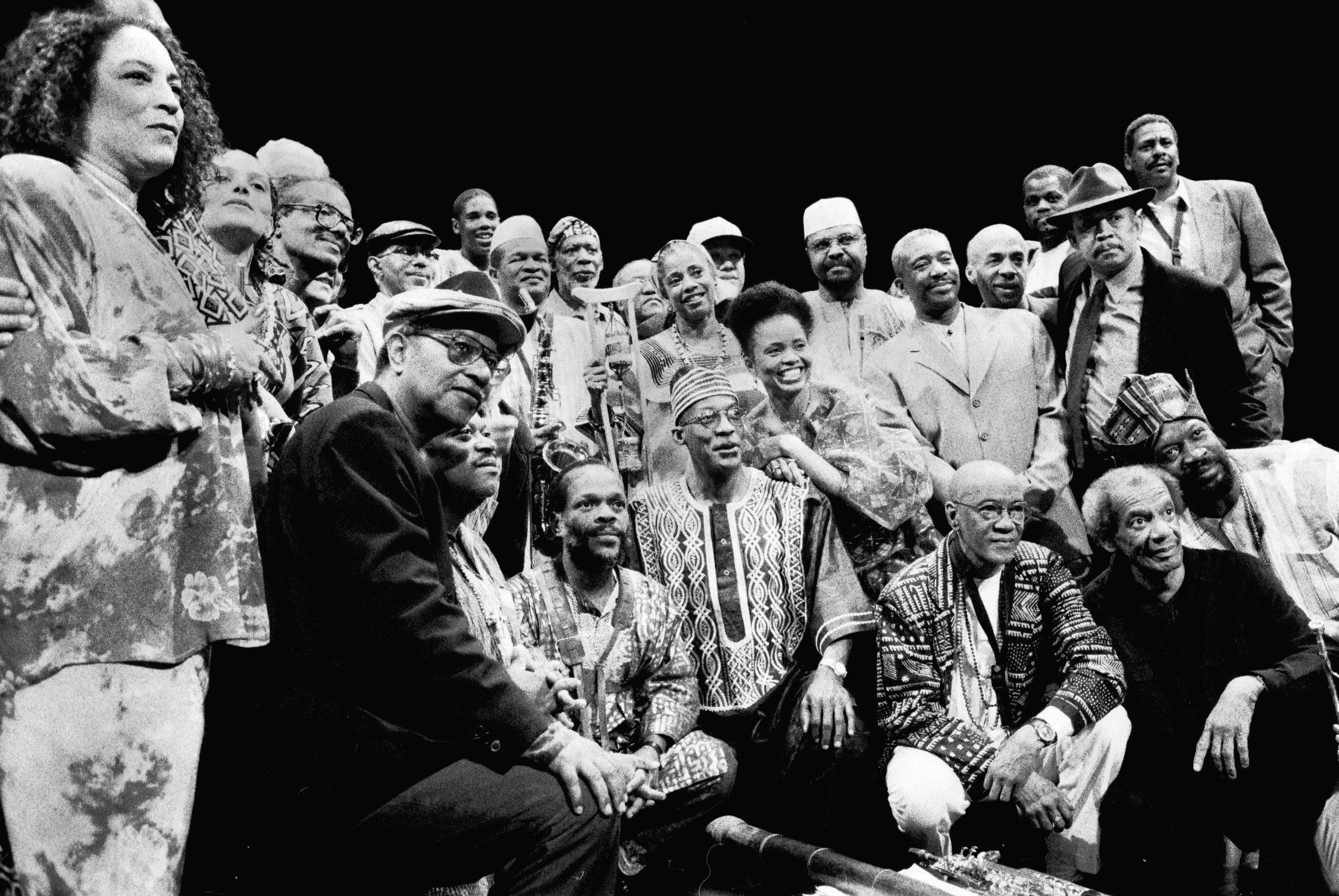
by Kai ELZabar
Presented in conjunction with DuSable Museum this evening event boasts the collaboration of multi-generational never-before assembled group of 50 members of the famed AACM/ Association for the Advancement of Creative Musicians. Members have traveled from all over the world to join in on this once in a lifetime “Bright Moment.” This gathering is a reunion of sorts presenting the old, young, new and founding members who will perform as one, an orchestra of organized sound. They will perform compositions from their catalog of works composed by their own. The audience will be privy to some of the classic compositions of some of the AAM’s best known artists as well as new original material created specifically for the 50th Anniversary celebration.
The concert ends the magical weekend of April 22-26 that began Wednesday demonstrating the lineage of dynamic musicians that continues in the tradition that began 50 years ago. The mix of performances master classes and workshops was further proof of just how the organization continues to transform the musical landscape. “Together: A Power Stronger Than Itself” is the theme anniversary theme captured in the exhibition celebrating the AACM. The AACM conjures its musical magic weekend of Music through its continued creative expression that but the 50 for 50 concert that reunites 50 of the most cutting edge musicians in contemporary music, including Grammy nominees Steve and Iqua Colson, Chico Freeman premiere tenor saxophonist and son of jazz saxophonist Von Freeman, legendary drummer and jazz studies professor Thurman Barker and multi-instrumentalist and Shinshu Buddhist priest Shaku Joseph Jarman an original founder of the Chicago Art Ensemble promises to ignite what’s been missing of those days of the Chicago Art Ensemble, Muhal Richard Abrams Big Band, AIR, Ethnic Heritage Ensemble, The Unity Troupe, Henry Threadgill, Douglas Ewart, Chicago Freeman, Edward Wilkerson and so many more.
Those were the days. The AACM members were required to compose and showcase new music as an agreement of the membership. So the community of jazz officianoes had the opportunity to partake in the listening concerts which revealed new music consistently. It was equivalent to participating in a laboratory of creative sound experiments. Each musician had a unique sound and persona. The music was rich, textured and full of hope and the future was made tangible. Their music was everywhere, NTU Lounge, Transition East, U of C, Churches, loft spaces, parks, colleges and university halls, campus student halls and wherever they found suitable to perform. It was something to look forward to, however the criticism that has come out of that is that though the venues were packed the majority of the listening audiences were white.
In retrospect, if one considers the venues such a point is true given that the Art Ensemble of Chicago became a fixture at the University of Chicago and so their audiences tended to be heavier on the white side. But their music was brilliant, intellectual steep in soul, conjuring blues, R&B and gospel from a free space full of rhythm and blackness. That cannot be denied. Often noted for their ceremonial masks painted on their faces and Bowie in his lab coat, why they did so was rarely asked but rather assumed that it symbolized the attitude towards the music as sacred. Some thought it represented the war that they fought as Black men and as musicians. Some may have even thought that it was a medium through which they released their inner spirit and left behind their human ego to allow themselves to more easily become the music. Whatever the motivation these men did much to influence not only the AACM but groups worldwide. No matter what, their respect for the music, freedom of expression and the right to create their own music landed loud and clear. They coined the phrase, ‘Great Black Music’ Ancient to the future’ as well as “A Power Stronger than Itself.” The collaborative effort of Lester Bowie on Trumpet, Don ‘Famoudou’ Moye of traps, Joseph Jarmen and Roscoe Mitchell on reeds and bassist Malachi ‘Maghostut’ Favors can never be reproduced because they were so authentically in each and every moment of expression. They set the precedence and everyone had to fall in line. The good news is that their level of artistic excellence was so profound that it was a good benchmark to seek.
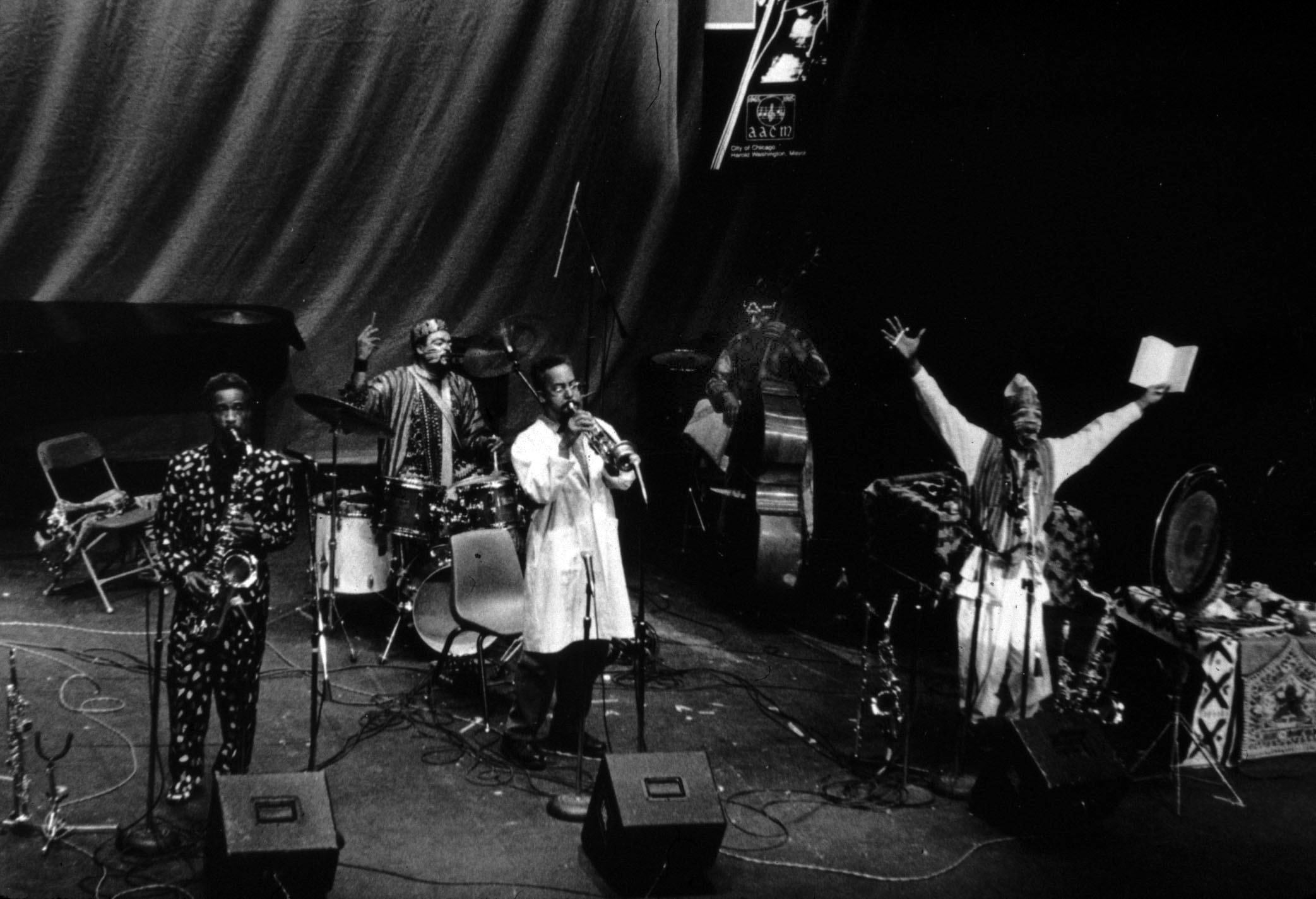

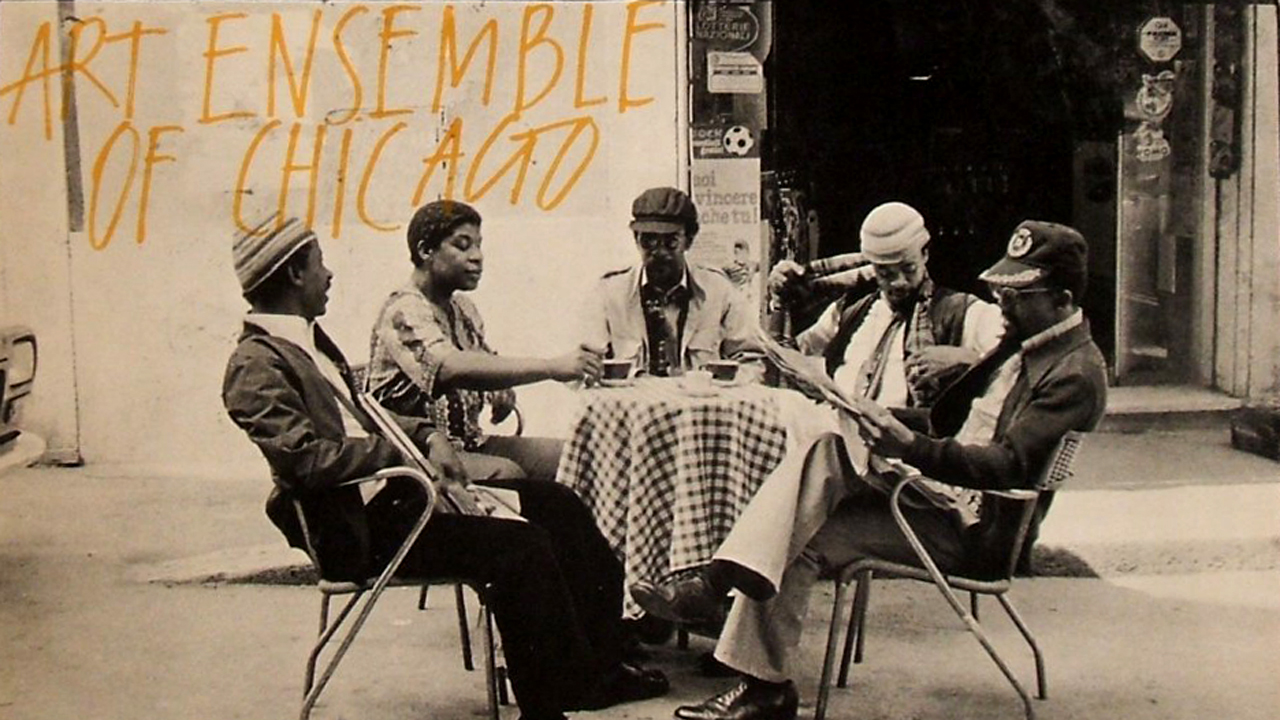
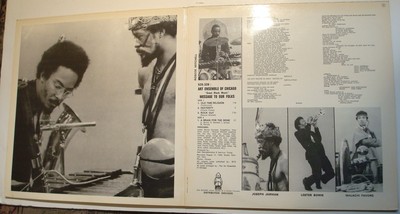
The Art Ensemble of Chicago was just one of many of the greats to come out of the AACM. We’d be remiss if we did not mention AIR in its own light, Henry Threadgill on reeds, Steve McCall on traps and Fred Hopkins on bass, which brought an entirely different sound to the world. AIR’s blend of melodic soul and raw grit was amazing to experience. Then there was the Ethnic Heritage Ensemble, a uniquely assembled group of three, 2 reedmen and one percussionist. The marriage of African rhythms and American jazz was quite an undertaking. At the time of its emergence such was unheard of but now others have borrowed from the pioneering concepts that emerged from the AAC. Since then the group has evolved but at its world introduction it was Kahil EL’ Zabar on African drum (added traps), the ebira,thumb piano with Edward Wilkerson and Light Henry Huff on reeds. That’s one of the wonderful things about the AACM. Of course there were others who tended to create from a more intellectual than emotional base, controlled, yet unconfined, emotionally identifiable yet void of the familiar soul that Blacks connect with and look for. No matter their pursuit they allowed themselves without fear to go for what their inner spirit spoke to them to do unapologetically.

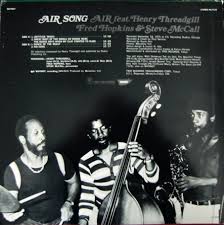

Interestingly enough though progressive as the AACM was they fell short in the area of gender equity. Women were not members until the mid seventies and we saw Amina Claudine Myers, Rita Warford and Iqua Colson break the all male barrier, open the door and lead the way for the women who have come after.
“We are a creative music organization rooted in the musical traditions of our people and we embrace all of the evolutions that we’ve had since the first notes on the planet,” said AACM chairman Khari B. “One of our members, George Lewis, was one of the earliest innovators of electronic music in the 70’s that EDM and electronica are doing now. The Chicago Art Ensemble were the first modern group to paint their faces as ceremonial mask. KISS imitated them. All these things are a nod to AACM. We don’t make divisions. We play music. We make art.”
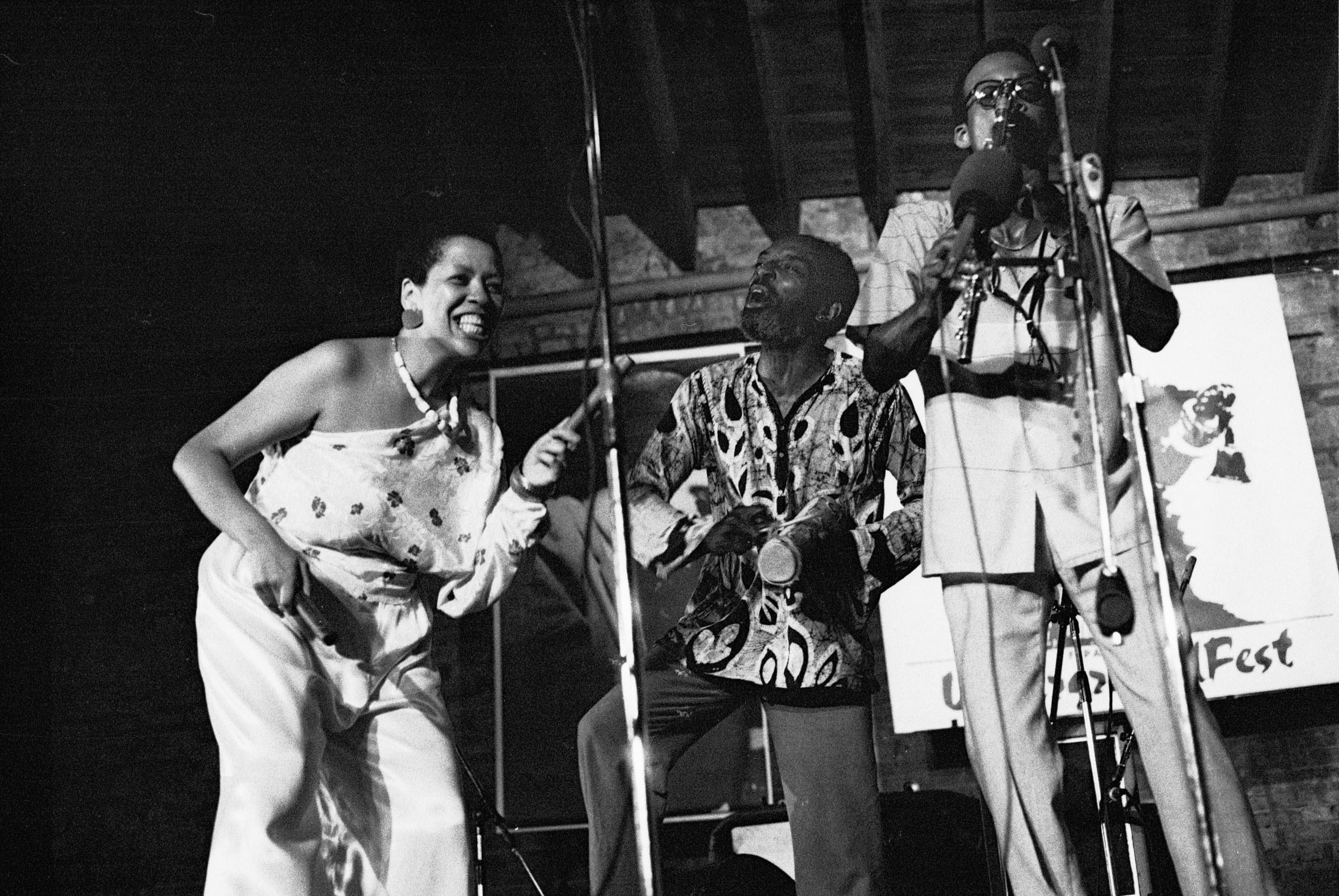
The centerpiece of the 50th Anniversary Celebration weekend is the reunion concert on Sunday, April 26 at University of Chicago’s Mandel Hall, co-presented by the AACM and the Logan Center for the Arts. This groundbreaking concert will reunite 50 powerful musicians and artists in a spectacular celebration of 50 years of creative output. Among the performers are Nicole Mitchell, Thurman Barker, Joseph Jarman, Renee Baker, Iqua Colson, Steve Colson, Douglas R. Ewart, Mwata Bowden, Khari B, Taalib-Din Ziyad, Saalik Ziyad, Earl Chico Freeman, Maia Sonjia Hubert Harper, Rita Warford, Sar Abshalom Ben Shalomo, Rasul Siddik .
Concert goers are invited to stop by the DuSable Museum of African American History, 740 E. 56th Place before the concert and view the exhibit, “Free at First: The Audacious Journey of the Association for the Advancement of Creative Musicians.” The exhibit runs through September 6, 2015.
In addition to reserved seating at the concert, VIP ticket holders will attend a post-performance reception with the artists.
TOGETHER: A POWER STRONGER THAN ITSELF!
Sunday, April 26
AACM CELEBRATES 50TH ANNIVERSARY WITH 50 MUSICIANS
50th Anniversary Reunion Concert, Mandel Hall – Reynolds Club, 1131 E. 57th
7-9 PM General Admission $35, $15 Students/Seniors w/ID
VIP Reception/exhibition viewing/reunion Concert ($100 VIP ticket)
Sunday, April 26 – 1-3 PM FREE
Creative Music Summit with Nicole Mitchell and Renee Baker at the Museum of Contemporary Art (MCA), 220 E. Chicago Ave
Nicole Mitchell and Renee Baker discuss their upcoming music premieres commissioned by MCA
EXHIBITION: Tuesday – Sunday Thru September 6, 2015
FREE AT FIRST: The Audacious Journey of the Association for the Advancement of Creative Musicians
DuSable Museum of African American History, 740 E. 56th Place
Hours: Tues – Sat. 10am – 5 pm; Sunday 12 pm – 5 pm – $10; $7 students/seniors FREE on Sundays